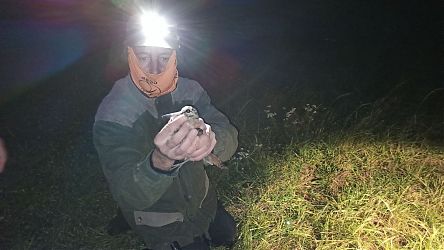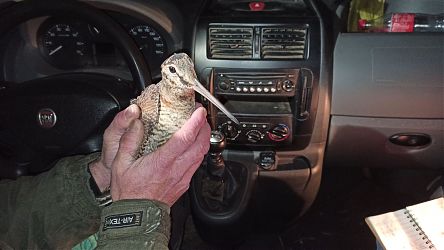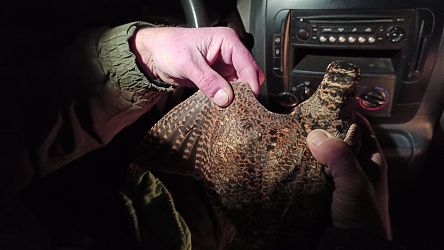The Vormsi Island Woodcock Sanctuary: an example for the study and conservation of woodcock in Europe
31.03.2022
Kokkuvõte: Artikkel räägib metskurvitsate uurimisest Vormsi saarel aastatel 2004-2021.
2006. aastal loodi Vormsi saarel Itaalia Metskurvitsaklubi initsiatiivil jahikeeluala nimega “Santuario della Beccaccia Isola di Vormsi” eesmärgiga uurida metskurvitsate rännet Läänemere arhipelaagis ning sealjuures kohaliku, saarel pesitseva nepipopulatsiooni käekäiku. Selleks kasutati ja kasutatakse ka järgnevatel aastatel:
- Linnukoeri (ICA-indeks), kelle abil loendatakse püsiseirealadel sügisel peatuvaid metskurvitsaid
- Saarel püütud metskurvitsaid, kes kõik rõngastatakse, kaalutakse ja mõõdetakse
- Juunikuus toimuvaid mängulennuloendusi
Kirde-Euroopa “pudelikaelana” tuntud Vormsil on aastatel 2010-2021 püütud ja märgistatud üle 600 metskurvitsa. Leitud on neid isendeid paljudes Euroopa riikides nagu Prantsusmaa, Inglismaa, Iirimaa, Hispaania, Itaalia, Saksamaa, Taani, Rootsi, Venemaa ja Eesti. Saarel rände ajal peatuvate metskurvitsate arvukus on 3-4 korda kõrgem kui parimatel looduskaitsealadel talvituspiirkondades.
Vormsi saare näol on tegemist metskurvitsate ainulaadse uurimisalaga kogu maailmas.
The Vormsi Island Woodcock Sanctuary: an example for the study and conservation of woodcock in Europe
March 2022 The Vormsi Island Woodcock Sanctuary Committee
by Jaanus Aua Zoologist, Alberto Pellegrini M.D., Giovanni Giuliani PhD Zoologist, Valerio Nicolucci Zoologist
The island of Vormsi is part of the Estonian Archipelago. It is located in the Baltic Sea less than 4 km from the Estonian coast, opposite the seaside town of Haapsalu in Läänemaa County.
The surface of the island is approximately 93 km2. The climate of the island is partially affected by the effects of the sea that surrounds it, giving rise to its typical microclimate: the rigors of winter are attenuated, often very accentuated in the Estonian mainland but during the summer temperatures remain cooler.
The birth of the “The Vormsi Island Woodcock Sanctuary” had as an environment of conception and development in the Italian “Club della Beccaccia” (Italian Woodcock Club). In 2004 the initiative for the constitution of the “Sanctuary” takes shape thanks to the commitment of some members and through the start of the collection of not a few funds necessary for the stipulation of the agreement the adventure began.
A “NO HUNTING AREA” was established with the local Hunting Club for the protection and study of the Scolopax rusticola species.
The reasons that gave rise to the Committee for the Sanctuary were substantially of two types: the first linked to the continuous and incessant desire to contribute to the knowledge of this bird, a stimulus unequivocally induced and animated by Prof. Silvio Spanò biologist and ornithologist of the University of Genoa, President of the Italian Club della Beccaccia, whose research and studies is testified by the multitude of publications and specific interventions on the woodcock that mark the path of his life as a naturalist.
The second, linked to the purposes inherent in the Statute of the Woodcock Club which invited to identify a form of hunting ethics in continuous adaptation in order to allow a hunting exercise compatible with the heritage to which it is drawn.
All this prompted a group of members to create a Committee characterized by its complete management autonomy, to identify an area of particular ornithological interest along the traditional migratory routes of the woodcock and to create a sort of bloodless research laboratory in the open.
In 2006 the ONLUS (Non-Profit Organization of Social Utility) was officially born, with the name of “Committee for the Woodcock Sanctuary of Vormsi Island”.
The economic contribution of hundreds of supporters has allowed the Sanctuary to exist and operate continuously until today. The monitoring activities on the island, related to the Scolopax rusticola, have been led since 2010 by the Estonian ornithologist Jaanus Aua. These essentially concern:
- Monitoring with the pointing dog (ICA)
- Ringing and detection of biometric data in connection with the Euring
- Monitoring in Croule (in June) with estimation of nesting woodcocks
During the monitoring period with pointing dogs which is carried out annually in October, it is customary to have an average of encounters around 3 woodcocks / hour but, considering the fluctuations of the migratory period, it is not uncommon, on some days, considering more or less 6 hours of research per day, encounter up to 30 woodcocks per day. The catches, for ringing purposes, are carried out at night, again during the month of October, with the use of lights and catch nets. This year, thermal visors were also used for the first time. This technology has facilitated and speeded up the nocturnal detection of woodcocks in the island’s grasslands. The results were excellent: 81 ringed woodcocks, plus the recapture of a bird taken on the island of Vormsi 3 years ago and which, at the time, had already been registered as an adult.
Since 2006, over 600 woodcocks have been caught and ringed on the island. In recent years there have been several recaptures reported to us from different parts of Europe (France, Spain, Germany, England, Ireland, Denmark, Sweden, Estonia, Russia) among which the 2 woodcocks taken in Italy (Liguria and Puglia) stand out. The most recent recapture (and in some ways amazing!) dates back to last spring in the Russian region of Sverdlovsk, a territory that extends east of the Urals, over 3500 km from Estonia. In this Oblast, a ringed woodcock in Vormsi was shot down in May 2021! Regarding the monitoring during the period of the Croule in the month of June, the children of the local school are also enrolled. For them, this activity is like an environmental education laboratory with outdoor lessons and exercises.
The presence in June and especially in October of numerous naturalists as well as dog lovers and hunters (without guns) of many European nationalities, constitutes for the reality of the island of Vormsi an undoubted opportunity for encounters and relationships that contribute to the local culture and economy and Estonian in general.






